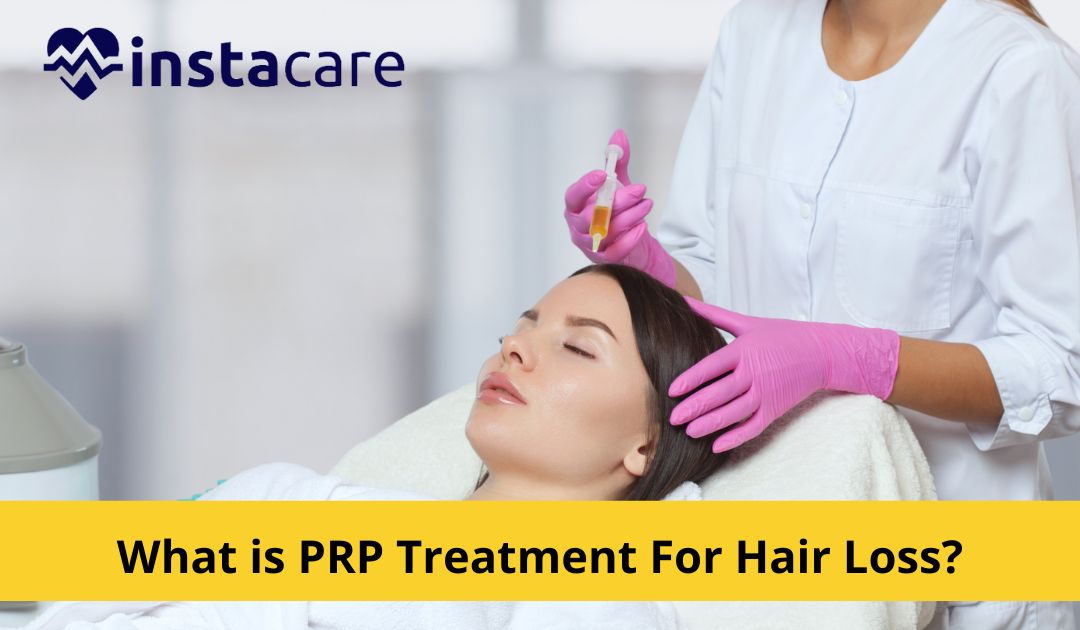The research on PRP injections to treat hair fall is still in its infancy. Although PRP treatment with specific growth factors has reportedly been successful in clinical research for some years, many doctors have only recently started using it in their practices. Despite being a relatively new technique, PRP has some scientific support for its ability to encourage hair growth. This article discusses how medical professionals administer PRP to treat hair loss.
PRP Hair Treatment
PRP Hair Treatment is a three-step medical procedure process in which a patient's blood is extracted, treated, and then administered to the head. Some health doctors believe that PRP injections stimulate and protect healthy hair growth by boosting blood flow to the epidermis and thickening the hair shaft. This method is occasionally used with other hair loss treatments or drugs.
PRP Treatment Method
There are three steps to PRP therapy. Three treatments, spaced 4-6 weeks apart, are typical for PRP therapy. Each 4-6 months, care procedures are necessary.
The first step involves drawing blood from a person, usually from the wrist, and placing it in a spinning. The spinning is usually a centrifuge machine that spins rapidly to separate fluids of different densities.
In the second step, your blood of different densities is divided into different layers roughly after a few minutes in the centrifuge. These layers include platelet-deficient plasma, high platelet plasma, and red blood cells.
View More: How to Stop Hair Fall
In the third step, plasma with high platelet is extracted with the help of a syringe and administered to the scalp's balding patches.
There isn't enough data to demonstrate the efficacy of PRP. Additionally, it's unknown who it works best for or in what conditions.
What Is The Duration Of PRP Hair Treatment?
PRP is not a treatment for illnesses that result in hair loss. To maintain hair growth outcomes, a patient would require numerous PRP procedures over time. The same would be true for drugs like topical minoxidil (Regaine) and oral finasteride, frequently prescribed by doctors to treat androgenic alopecia. Once hair loss is under-managed, the doctor may advise getting upkeep treatments every three to six months.
PRP Treatment For Hair Side Effects
Before the surgery, disclose any pills and herbal remedies you are taking. During your first visit, many healthcare professionals would advise against PRP for hair loss if you are a heavy smoker, blood thinning user, or with a background of addictions.
If you have been given the following diagnoses, you will be rejected for the treatment.
- Related to chronic illnesses
- Tumor
- Persistent liver damage
- Persistent skin condition
- Blood pressure fluctuation
- Hypofibrinogenemia
- Nutritional disorder
- Symptoms of platelet impairment
- A systemic condition
- Sepsis
- Reduced platelet count
- Thyroid condition
You should be aware that you could have certain unfavorable side effects after receiving PRP injections. Even though most of them are not significant, if they continue or worsen, you should see a specialist.
- Fainting
- Nausea
- Achy scalp
- Discomfort as the body is recuperating
- Near the injected location, scar formation
- Vascular damage
- Damaged nerves
PRP Hair Treatment Cost
The price of PRP hair treatment in might range from $100 to $250 each session. Depending on how far along your balding is, you can require anywhere from one to eight treatments to achieve your desired results. Most patients require three to four treatments annually on average.
View More: What Causes White Hair At Early Age
PRP Hair Treatment Success Rate 2021
Although the precise ultimate success of PRP treatments for hair restoration is unknown, the average patient has success rates of between 70 and 90 percent. Younger people just starting to suffer the consequences of hereditary hair loss and weakening tend to benefit from it more. Your provider will talk to you about this, though.
Who Can Get PRP Hair Treatment?
There are more PRP hair treatment prospects than hair transplants. But every medication has its limits, regardless of how effective or adaptable it is. They are significantly smaller than treatment options, except PRP hair treatments. Studies reveal that therapy considerably worsens hair loss in women with androgenic alopecia.
Men with androgenic alopecia could or might not benefit significantly from PRP. Areas of hair loss are what matter here. Men who have sparse patches of hair loss can use PRP. However, a hair transplant is the only option if the hair loss is advanced. For the greatest outcomes, combine a hair transplant with PRP treatments.
Please book an appointment with the Best Dermatologist in Lahore, Karachi, Islamabad, and all major cities of Pakistan through InstaCare, or call our helpline at 03100002273 to find the verified doctor for your disease.

